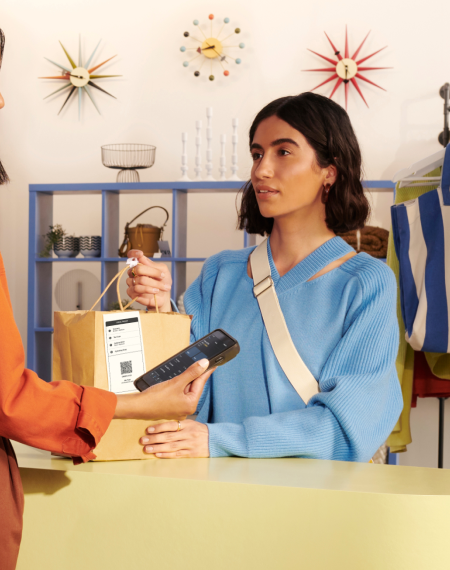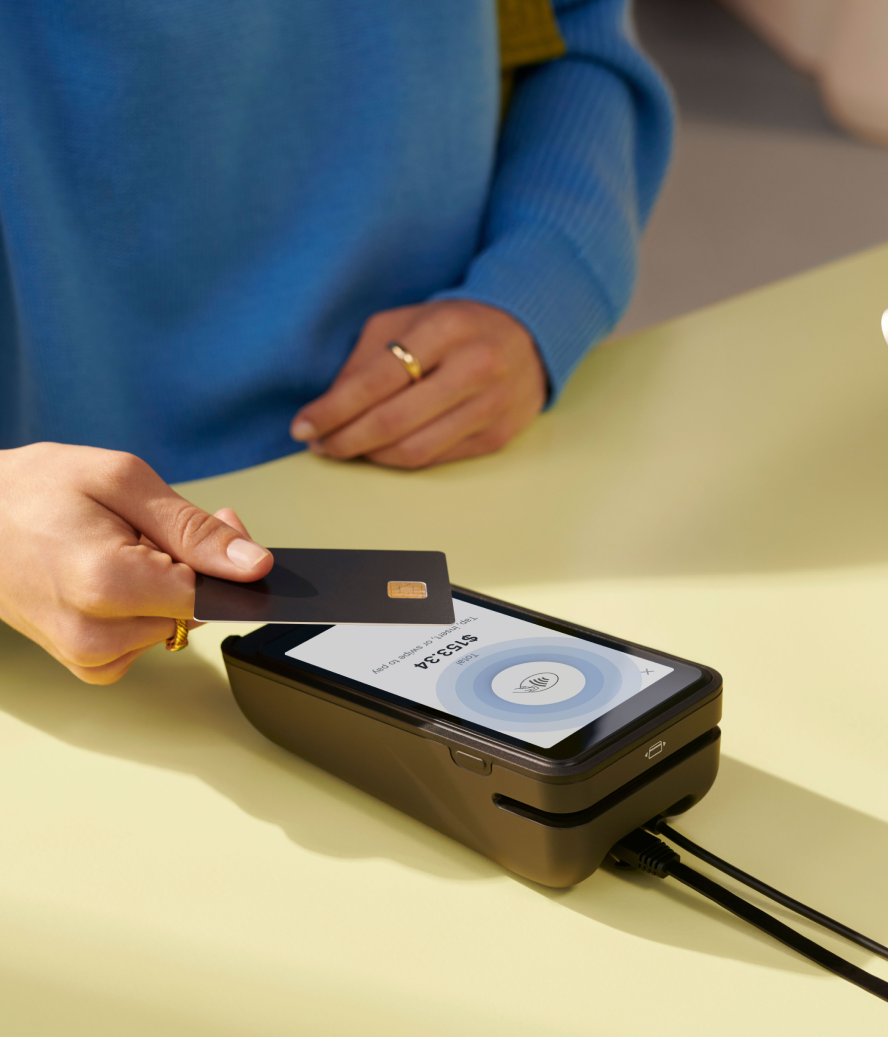AI in retail isn’t new. In the early 2000s, Amazon introduced its groundbreaking recommendation engine, Walmart transformed inventory management, and Macy’s implemented dynamic price optimization—all with the help of AI.
While advancements in AI were gradual until 2022, the launch of ChatGPT marked a significant turning point, accelerating AI integration across the retail sector. Since then, AI technologies and AI tools have enhanced nearly every facet of retail operations.
Retailers have swiftly embraced these innovations to boost customer engagement. A 2023 report by McKinsey revealed that the adoption of AI tools in retail increased by 25% year over year since 2020, with no signs of slowing down.
This article will explore the future of AI in retail, provide recent examples, and discuss how AI benefits the industry as a whole.
What is AI in retail?
AI in retail involves using advanced algorithms and machine learning to transform how retailers operate, from personalizing customer experiences to streamlining supply chains. AI drives everything from chatbots offering 24/7 customer support to autonomous devices that manage reordering and optimize in-store processes.
Modern AI tools analyze vast datasets in real time to predict demand, tailor promotions, and even adjust pricing on the fly. This not only helps retailers understand consumer behavior and forecast trends, but also improves operational efficiency across the board. For instance, AI-powered systems can automatically adjust inventory levels based on emerging sales patterns or deliver hyperpersonalized product suggestions that boost conversion rates.
Adoption of AI in retail
Businesses in virtually every industry are adopting AI. More than 9 in 10 businesses already use it to a moderate or significant extent. And many executives want to expand into more sophisticated AI use cases.
In retail specifically, nearly 90% of retailers either actively use AI in their operations or are assessing AI projects. And the results have been positive: 87% say AI has had a positive impact on revenue and 94% have seen it reduce operating costs. As such, 97% of retailers plan to increase their AI spend in the next year.
The surge in AI innovation has already transformed how retailers operate internally and interact with customers.
While retailers are adopting tools to improve operations and create convenient experiences for customers, AI tools are moving the innovation needle for retail businesses one more notch forward. AI advancements also introduce a new kind of customer for retailers to cater to—the “machine customer.”
Machine customers are AI-driven entities that autonomously make transactions for consumers. For example, a smart refrigerator can order groceries, a home assistant can stock up on house supplies, and a smart printer can reorder ink when toner is low—all without any human consumer intervention.
So, is AI the future of retail? In a word, yes. In the past, it was a shimmer on the horizon. It’s ubiquitous in the present. And it’s most likely the entire future—not only from a retailer’s perspective, but from consumers’ too.
10 use cases of AI in retail
While we haven’t quite reached the phase where robots run every aspect of retail, AI has already improved several critical, time-consuming operations. Here are some prime examples:
- Demand forecasting
- Inventory management
- Merchandising
- Supply chain management
- Dynamic price optimization
- Customer service chatbots
- Personalization
- Sentiment analysis
- Frictionless checkout
- Loss prevention
Demand forecasting
By analyzing historical sales data and market trends, AI can predict future product demand, helping retailers optimize stock levels and reduce waste. As many as 44% of retailers use AI for predictive analytics, and 41% use it for customer analysis and segmentation—both of which are tools used to inform sales and demand forecasts.
For example, Shopify merchant Doe Beauty leverages Shopify’s AI-driven tools to efficiently manage inventory across their global supply chain. They save $30,000 each week, and about four hours of human labor, thanks to Shopify Flow and automation.
Inventory management
For physical retailers, inventory management is one of the most common AI use cases. Real-time inventory monitoring is possible with AI, which automates restocking and reduces the chances of stockouts or overstock situations.
Shopify merchant Incu has brought the very latest in international fashion and lifestyle products through their 10 retail stores on Australia’s east coast. They have automated several aspects of the business with AI technology—one of those being inventory management. This has helped the retailer boost sales by 300% year over year.
Merchandising
AI is also reshaping how retailers approach merchandising, enabling more strategic product selection and placement. By analyzing consumer behavior and shopping patterns, AI helps retailers anticipate demand, optimize inventory, and ensure the right products are featured at the right time. This leads to more relevant shopping experiences and improved sales performance.
High fashion retail brand Antonioli, for example, used Shopify and AI to help optimize their merchandising strategy. They started by assessing both the front- and back-end organization for their product collections—so they would be dynamic and personalized for shoppers, but orderly and easy to manage for employees.
Shopify has allowed Antonioli to centralize and be more efficient. Both ecommerce and the warehouse management are unified and brought under one roof. And with automatic enrichment of product data, the user experience is also significantly improved, facilitating navigation and purchasing on an international scale.
Supply chain management
AI is hugely advantageous when it comes to supply chain management. And managing the supply chain is becoming increasingly complex and difficult, making AI a welcome addition.
Nearly 6 in 10 retailers say AI improves operational efficiency and throughput, and 45% say it helps them reduce supply chain-related costs. Another 42% are incorporating more of the technology to meet changing consumer expectations. One analysis found that generative AI (GenAI) tools can reduce raw material costs by 5%—largely because they shortens the process of researching new products from weeks to just days.
Sustainable sheets brand Boll & Branch successfully employed AI and Shopify to optimize their complex supply chain. They built a comprehensive ERP integration to connect data from order sources to their supply network. The integration made strategic customer experience initiatives possible, including features for automated inventory tracking, checkout optimization, order tracking, and shipping. Today, the company’s annual revenue exceeds $100 million.
Dynamic price optimization
AI-powered dynamic pricing allows retailers to adjust prices in real time based on factors like demand, competitor pricing, customer behavior, and market conditions. AI can analyze vast datasets and determine the optimal price for a product at any given moment, maximizing both sales and profitability.
Retailers benefit from AI-driven price optimization by ensuring competitive pricing while protecting margins. These systems continuously monitor sales velocity, inventory levels, and external market trends to make automatic adjustments. This level of responsiveness helps retailers capitalize on peak demand, clear slow-moving inventory, and personalize pricing for different customer segments.
Dynamic pricing is especially valuable for ecommerce businesses, where market conditions shift rapidly. AI-driven tools enable online retailers to implement flexible pricing strategies, such as time-sensitive discounts, personalized offers, and demand-based adjustments. As AI technology advances, retailers can refine their pricing strategies further, enhancing both revenue and customer satisfaction.
Customer service chatbots
Customer service chatbots continue to make their mark. Since Cyber Monday 2024, retailers have increased their use of generative AI and chatbot agents by 23%. And those that used these technologies for customer service during the holiday season saw nearly double the engagement growth compared to those without these capabilities (38% versus 21%).
AI-powered chatbots provide shoppers with instant assistance. They can improve the customer experience, offer personalized recommendations, boost conversions, and mitigate issues like returns. According to McKinsey, one global lifestyle brand developed a GenAI-powered shopping assistant that drove a 20% increase in conversion rates.
Luxury retailer Peter Sheppard Footwear added chatbots to improve customer service on their Shopify website—so it could be on par with the level of service provided in-store. This move helped drive a 30% increase in revenue.
Personalization
As many as 42% of retailers use personalized marketing and advertising powered by generative AI. Retail AI enhances personalized shopping experiences by suggesting products based on customer data, boosting sales, and improving customer satisfaction. Personalized recommendation systems like Netflix’s AI suggest products that match consumer preferences.
Take a look at Shopify merchant BÉIS as another example. The travel and lifestyle brand used Nosto, an AI-powered customer experience app available in the Shopify store, to create personalized experiences customized to shopper behavior. This helped the brand customize targeting for specific products during a customer’s most ripe buying period, supporting their= double-digit growth.
Sentiment analysis
Retailers can gauge public sentiment about products or brands through AI analysis of customer reviews and social media posts, informing decisions about product offerings and marketing strategies. In fact, analytics and insights are one of the most common use cases for AI in retail.
For example, makeup and skincare retailer Sephora uses AI to analyze customer feedback, which helps improve product recommendations and store layouts by identifying trends and preferences in large data volumes.
Frictionless checkout
AI technology enables seamless checkout experiences, removing the need for manual scanning or cashier interaction, thus speeding up the shopping process and reducing wait times.
Home and design brand The Conran Shop adopted a unified commerce approach across their B2B, POS, and online experiences to offer seamless checkout. The retailer has seen a 50% reduction in their total cost of ownership (TCO), plus a 54% increase in conversion rates and a 23% increase in email marketing revenue since replatforming to Shopify.
Loss prevention
AI detects and prevents theft and fraud by monitoring in-store activity and identifying suspicious behavior, reducing losses. Drugstore chain Walgreens employs AI to analyze security footage and detect potential shoplifting incidents in real time.
This technology uses machine learning algorithms to monitor video feeds, identify suspicious behavior, and alert security personnel instantly. The system improves its accuracy over time by learning from past incidents.
How to use AI in retail
Now that you’ve looked at some concrete examples of AI working in the retail world, consider how to use it in your own stores:
More accurate inventory counts
AI technology eliminates human error by automating real-time inventory tracking and management. Machine learning algorithms analyze sales data, customer demand, and stock levels to ensure correct inventory levels and counts. The result? Reduced overstocking and stockouts.
For example, Target has successfully implemented an AI-driven inventory management system known as the Inventory Ledger. This system uses advanced machine learning models and IoT devices to provide accurate inventory data in real time across 2,000 stores.
To quantify its effectiveness, the Inventory Ledger processes up to 360,000 inventory transactions per second and handles as many as 16,000 inventory position requests per second—a task only a machine could handle.
Higher shopper engagement
AI technology is also a win in terms of boosting shopper and customer engagement. Machine learning algorithms analyze customer data to offer tailored product suggestions, anticipate needs, and provide personalized promotions.
For example, Sephora uses AR and AI-driven tools like virtual try-ons and personalized skincare recommendations based on customer data and preferences. These tools make it easy for customers to select the right product for their unique skin type—without having to set foot in a store.
Improve customer experience
With AI, it’s easier now than ever to cater to customer demands. AI technology can keep up with simultaneous customer support requests around the clock. AI automates responses, reduces (or even eliminates) wait times, and personalizes interactions.
MakerFlo is a constantly evolving ecommerce brand with a track record of success. They use Yotpo to collect reviews with AI-powered review widgets that drive social proof. Reviews are displayed and integrated into social media and Google, where it’s easy to stand out with Google Seller Ratings and Google Shopping Ads. This has improved the customer experience, driving loyalty and converting more customers.
Store assistance
AI also helps retailers improve their in-person and online stores by assisting with skill sets they might not possess. For example, Shopify offers retailers the help of its AI tool, Shopify Magic.
Shopify Magic helps you with tasks like generating and editing professional product photos, writing better product descriptions, improving email correspondence with customers, and turning live chats into sales opportunities.
Challenges of AI in retail
While AI offers significant benefits, its adoption in retail comes with challenges.
- Bias: AI systems rely on historical data to make predictions, which means they can unintentionally reinforce existing biases. If the training data is flawed or unrepresentative, AI-driven recommendations, pricing strategies, or hiring decisions may be skewed, leading to unfair or ineffective outcomes.
- Data quality and collection: AI is only as good as the data it processes. Inconsistent, incomplete, or inaccurate data can lead to poor decision-making and unreliable insights. Retailers must invest in robust data collection and management practices to maximize AI’s effectiveness.
- High implementation costs: Deploying AI in retail requires significant investment in infrastructure, software, and employee training. According to one survey, many retailers find AI tools to be difficult to understand and/or explain—not to mention costly to implement and onboard.
The future of AI in the retail industry
AI fundamentally changing how businesses operate and how customers shop. With adoption rates surpassing those of smartphones and tablets, generative AI is becoming essential for staying competitive.
Forward-thinking retailers are using AI to transform every aspect of their business:
- Personalizing customer experiences at scale
- Automating routine tasks to free up staff
- Making smarter inventory and pricing decisions
- Predicting trends before they emerge
AI becomes even more powerful when built on the right foundation. Modern retail platforms like Shopify combine AI capabilities with a complete view of your business—from customer behavior to sales patterns to inventory levels. This means AI tools can work with accurate, real-time data to deliver better insights and automate more effectively, helping retailers make smarter decisions and serve customers better.
The most successful retailers will be those who embrace AI strategically, focusing on solutions that deliver real value for their business and customers. As AI technology continues to evolve, it will enable even more innovative ways to serve customers, optimize operations, and drive growth.
AI in retail FAQ
How is AI used in the retail industry?
AI in retail is used for personalized product recommendations, inventory management, predictive analytics, customer service, and enhancing in-store experiences with tools like virtual try-ons, chatbots, and smart mirrors. AI helps retailers understand customer behavior, optimize supply chains, and improve overall operational efficiency. In the future, expect to see more advancements in AI that will benefit the retail industry.
How many retail companies are using AI?
Nearly 90% of retail companies either actively use AI in their operations or are assessing AI projects. Another 87% say AI has had a positive impact on revenue, and 94% have seen it reduce operating costs. As such, 97% of retailers plan to increase AI spend in the next year.
Will AI take over retail jobs?
AI is more likely to change retail jobs rather than take them over entirely. While automation may reduce the need for certain manual or repetitive tasks, AI also creates new roles focused on managing, optimizing, and interpreting AI-driven insights. Retail employees will likely shift toward higher-value tasks, such as enhancing customer relationships, strategic planning, and AI oversight.
What is the future of retail with AI?
The future of retail with AI will likely include hyperpersonalized shopping experiences, more efficient supply chains, and smarter in-store and online interactions. AI will continue to evolve, making predictive analytics more accurate, automating more processes, and integrating seamlessly with other retail technologies. Retailers that embrace AI strategically will be better positioned to adapt to changing consumer demands and market conditions.





